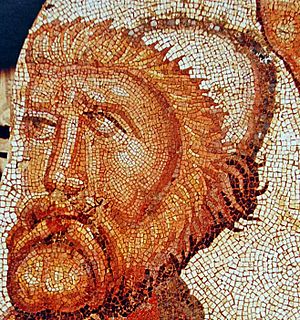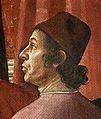Homer's Odyssey facts for kids

The Odyssey in Classical Attic) is one of two major ancient Greek epic poems attributed to Homer. It is, in part, a sequel to the Iliad, the other work ascribed to Homer.
The Odyssey is fundamental to the modern Western canon; it is the second-oldest extant work of Western literature, while the Iliad is the oldest. Scholars believe the Odyssey was composed near the end of the 8th century BC, somewhere in Ionia, the Greek coastal region of Anatolia.
The poem mainly focuses on the Greek hero Odysseus (known as Ulysses in Roman myths), king of Ithaca, and his journey home after the fall of Troy. It takes Odysseus ten years to reach Ithaca after the ten-year Trojan War. In his absence, it is assumed Odysseus has died, and his wife Penelope and son Telemachus must deal with a group of unruly suitors, the Mnesteres or Proci, who compete for Penelope's hand in marriage.
The Odyssey continues to be read in the Homeric Greek and translated into modern languages around the world.
Images for kids
-
Charles Gleyre, Odysseus and Nausicaä
-
Odysseus Overcome by Demodocus' Song, by Francesco Hayez, 1813–15
-
Odysseus discovers Penelope has devised tricks to delay the suitors whilst he has been away: Penelope and the Suitors by John William Waterhouse
-
Portrait by the Italian painter Domenico Ghirlandaio of the Greek Renaissance scholar Demetrios Chalkokondyles, who produced the first printed edition of the Odyssey in 1488
-
Front cover of James Joyce's Ulysses
See also
 In Spanish: Odisea para niños
In Spanish: Odisea para niños










